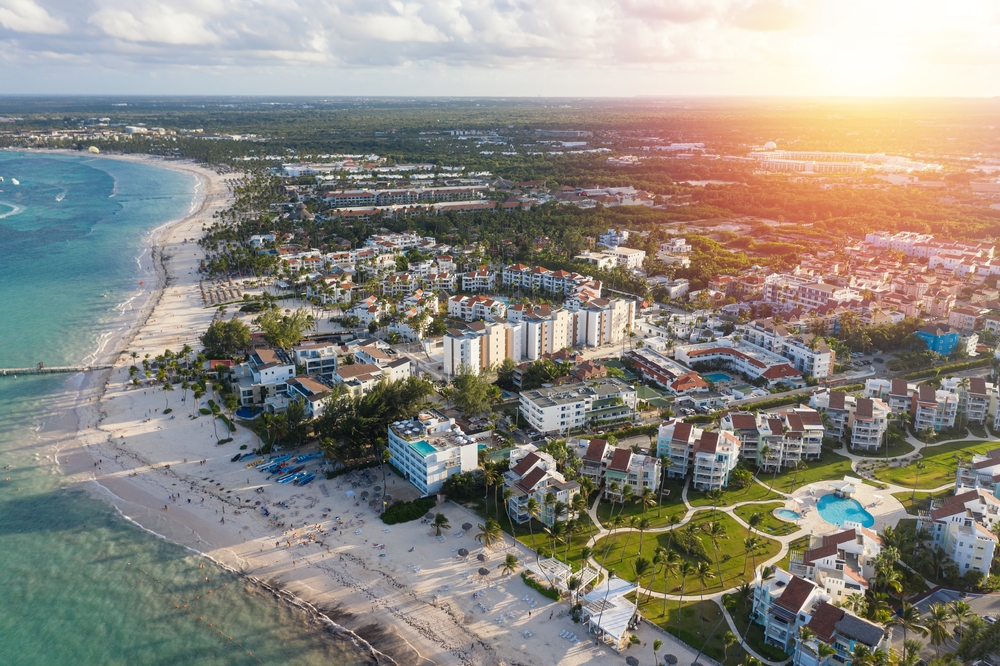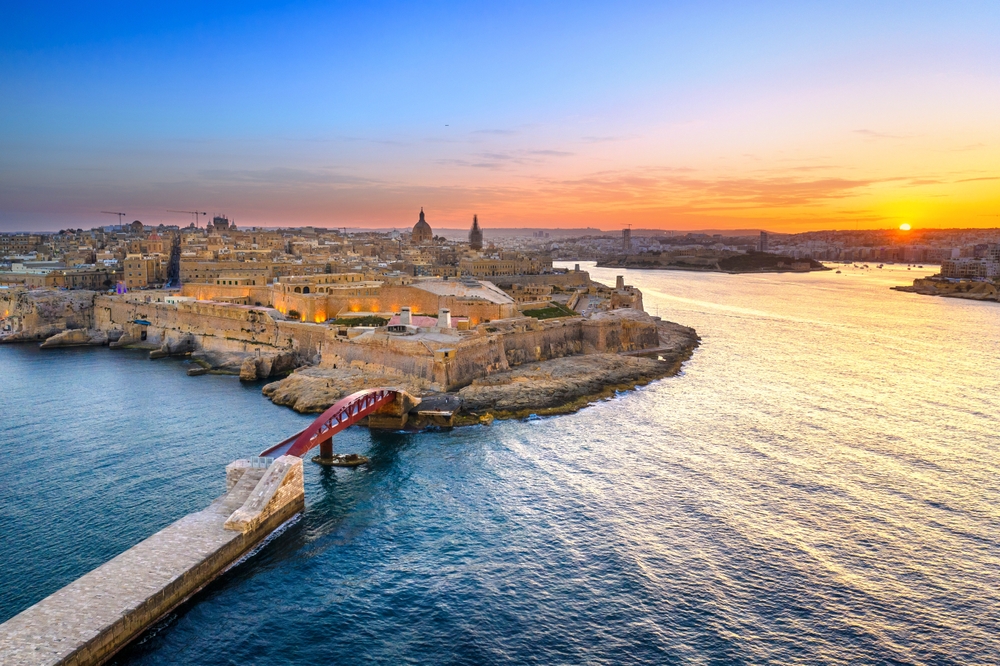Why Invest in Punta Cana Real Estate?

- Current Real Estate Trends in Punta Cana
- Who Is Buying in Punta Cana?
- Property Prices vs. Value in Punta Cana
- Rental Yields and Airbnb Opportunities
- Tax Incentives for Investors in the Dominican Republic
- Residency and Citizenship Options Through Investment
- Key Areas to Consider in Punta Cana
- Should You Invest in Punta Cana Real Estate Now?
- Need Help?
For those considering a foothold in the Caribbean, Punta Cana has become a top-of-mind option, and for good reason. Over the last decade, this beach-framed slice of the Dominican Republic has transformed from a resort-heavy getaway into a lifestyle destination drawing retirees, remote professionals, and international property investors alike.
The pull is strong among North Americans and Europeans. With direct flights, a lower cost of living, a warm climate year-round, and modern infrastructure tailored to tourism, Punta Cana appeals to more than just holidaymakers. It’s increasingly seen as a viable base for semi-retirement, seasonal living, or even permanent relocation.
Beyond the glossy beaches, there’s something deeper at play. The Dominican Republic enjoys consistent economic growth and political stability, two major anchors when assessing foreign real estate markets. Couple that with strong rental demand and a host of tax incentives, and you’ve got a compelling case for property ownership in this part of Central America.
Current Real Estate Trends in Punta Cana
Let’s start with the macro. Real estate growth in Punta Cana has begun to level out after the global post-COVID price surge. From 2024 through 2029, the forecasted annual appreciation sits around 1.5%. That’s not explosive growth, but it’s consistent, particularly in a region where volatility can often shape the curve.
Compared to more mature real estate markets in Central and South America, such as Medellín or Panama City, Punta Cana stands out not for urban sophistication, but for consistent tourism inflow. Hotel occupancy hovers around 90% on a rolling average. In other words, demand hasn’t softened.
This makes the area particularly interesting for investors targeting rental income over aggressive price appreciation. We’re not looking at a market poised to triple in five years. But for those playing a longer game, or planning to live part-time in the property, that stability may be exactly what you’re after.
Who Is Buying in Punta Cana?
The buyer mix reveals a lot about a destination. In Punta Cana, international buyers come in three waves.
First, you have the North Americans, primarily from the U.S. and Canada, driven by affordability, climate, and lifestyle. Then, regional buyers from Venezuela and Haiti, some seeking economic refuge and others purchasing for future relocation. Lastly, a notable group of Europeans, particularly from Italy and France, pursuing the classic holiday home play.
Here’s the catch. Only 7% of property buyers apply for Dominican residency. That tells us this is a holiday home market more than a relocation destination. For long-term investors, this raises questions. Will demand hold up if a market correction hits? Who’s going to be your resale buyer? And are you competing with emotional rather than rational capital?
Understanding that dynamic is essential. If you’re buying with a clear investment mandate, your strategy should look very different from someone seeking sun-soaked weekends by the beach.
Property Prices vs. Value in Punta Cana
Now let’s talk numbers. For detached houses in Punta Cana, you’re looking at an average of $1,700 per square meter. Condos average around $2,000. Compare that to the U.S., where condos hover around $5,000 and houses around $2,600, and the appeal is obvious.
But here’s the nuance. In cities like Medellín, Colombia, where infrastructure is strong and demand is growing, prime properties are still trading around $1,100 per square meter. That suggests Punta Cana, despite being in a developing market, is priced more like a maturing one.
Is this sustainable? Possibly. The demand from tourists and second-home buyers is certainly there. But with such a large share of short-term, non-resident buyers, the risk of market softness or fire-sale offloading during downturns is real. Remember, holiday homes are the first assets most people list when times get tough.
So while pricing might still seem attractive compared to the West, make sure you’re buying in a segment of the market where liquidity and end-user value hold firm. That means beachfront, prime locations, or highly rentable areas only.
Rental Yields and Airbnb Opportunities
If you’re targeting rental income, Punta Cana has one of the most compelling short-term yield profiles in the Caribbean. In city center areas, net yields hover around 6%. Head closer to the beachfront, and that number can climb to 14 or 15%.
What’s driving it? Tourism. With over 4 million annual visitors and a hotel occupancy rate averaging 90%, the market is fueled by short stays and Airbnb-style bookings. Long-term rentals aren’t the main game here. In fact, many landlords operate strictly in the short-term space.
This opens up opportunity for Airbnb arbitrage and creative cash flow strategies. Rent long-term at lower prices and re-rent short-term. Or buy and furnish a property optimized for vacation stays. Just be mindful. These high yields rely on consistent occupancy, quality property management, and seasonal pricing awareness.
Still, for the right investor, that yield spread can outperform traditional urban rental strategies in Europe or North America, with the added bonus of personal use flexibility.
Tax Incentives for Investors in the Dominican Republic
Let’s start with what gets most savvy investors interested in Punta Cana beyond the beaches: the tax perks.
The Dominican Republic offers several investor-friendly tax incentives that are not only attractive, but genuinely competitive when compared to other Caribbean and Central American jurisdictions. First, the property transfer tax is a flat 3%. That’s not the lowest globally, but it’s significantly better than what you’d find in places like the US, Canada, or many parts of Europe.
More importantly, certain properties are exempt from the 1% annual property tax for up to 15 years. That exemption applies if the property is newly built and valued below the threshold of approximately $166,000. For higher-end investors, this can translate into thousands in yearly savings.
Then there’s the 10-year income tax exemption, applicable to foreign-sourced income and applicable under the government’s incentive program for tourism-related real estate. If you’re bringing in rental income from abroad, this can dramatically lighten your tax burden. On top of that, personal property imports and furnishings for your new home are also tax-exempt under the same program.
Perhaps most uniquely, the country offers a 50% exemption on capital gains and mortgage tax. Few markets extend that level of generosity, especially in a region known for protectionist tax regimes.
Together, these incentives explain part of the sustained interest in Dominican real estate post-COVID. They’re well-structured, long-standing, and clearly designed to attract long-term foreign investment.
Residency and Citizenship Options Through Investment
A natural question for any investor considering real estate abroad is: does it come with a pathway to residency or even citizenship?
In the Dominican Republic, the answer is yes, with caveats.
Through the country’s investor residency route, you can qualify for permanent residency by making a qualifying investment of at least $200,000. This can be in real estate, a local business, or even interest-bearing term deposits. Once approved, you’re granted an initial one-year permanent residency permit, renewable for up to four years.
In theory, this route can lead to citizenship after a few years, as Dominican legislation outlines a naturalization path for long-term residents. However, in practice, the citizenship process is far from straightforward. While the laws are there, and the steps are documented, there are very few verified cases of foreign investors successfully acquiring a Dominican passport through this pathway.
Unlike other countries in the Caribbean like St. Kitts or Antigua, the Dominican Republic does not have a formal citizenship by investment program, and that makes the citizenship timeline much less predictable.
That said, if your goal is residency with lifestyle perks, tax exemptions, and a foothold in the region, the Dominican Republic checks a lot of boxes. But if you’re after a second passport on a guaranteed timeline, you may want to look elsewhere.
Key Areas to Consider in Punta Cana
Not all real estate in Punta Cana is created equal. Location matters, not just for lifestyle, but for investment returns, liquidity, and overall value.
Downtown Punta Cana – Commercial and Airbnb Hotspot
This is the beating heart of the region’s hospitality economy. Think modern condos, mixed-use developments, and walkability. If your strategy is short-term rental or Airbnb, Downtown Punta Cana offers consistent occupancy and better-than-average returns due to proximity to shops, nightlife, and beach clubs.
It’s also the most accessible hub for visitors flying into Punta Cana International Airport, which means turnover rates and rental potential remain high year-round.
Cap Cana – Luxury Homes and Exclusive Resorts
If you’re looking for ultra-premium, this is your spot. Cap Cana is home to gated communities, five-star resorts, and some of the highest-end villas in the Caribbean. Think of this as the Beverly Hills of the Dominican Republic.
Yields here may not be as high as in Downtown, but capital appreciation and resale liquidity, especially for beachfront or branded residences,can be strong. Plus, it’s one of the few zones where foreign investment is highly concentrated at the luxury level.
Bavaro – Condos with High Rental Returns
This is where value and performance meet. Bavaro is slightly outside the core tourist zone, but still close enough to enjoy the benefits of proximity. Here, you’ll find condos at relatively lower prices with high rental turnover, making it ideal for budget-conscious investors focused on yield.
It’s also popular with digital nomads and mid-term renters, giving you a buffer if the short-term market softens.
Macao – Upcoming Resort Developments
Macao is on the rise. With branded hotels and higher-end resorts under development, this area is becoming a strategic entry point for early investors. You can find better build quality, more modern amenities, and lower price per square meter, for now.
If you’re playing the long game, Macao offers upside potential for both capital gains and future income generation, especially as infrastructure expands.
Verón Alto – Future Ultra-Prime Investment Zone
Currently more speculative, Verón Alto is being groomed as a future ultra-prime corridor. Developers are betting on the area becoming the next big luxury cluster, thanks to major infrastructure projects and planned high-end communities.
If you’re comfortable being early and want to secure prime land before the boom, this could be one of the more strategic forward-looking bets.
Should You Invest in Punta Cana Real Estate Now?
Let’s wrap up with the big question. Is now the right time?
The answer depends on your profile. If you’re a lifestyle buyer, someone looking for an affordable second home, warm weather, and favorable taxes, the timing is excellent. You’re buying into a stable market with proven rental demand, and you’re getting it at a discount relative to other coastal hotspots globally.
For pure investors, the outlook is more nuanced. Growth is forecasted to level out, and the risk of oversupply or a soft correction is real. That’s why it’s critical to focus on high-demand zones, beach proximity, and short-term rental viability.
What you should not do is buy with emotion. This is still a second-home market. The majority of buyers are not residents, which can impact liquidity if the market cools.
To mitigate risk, look for:
- Strong yield potential
- Proven occupancy rates
- Properties eligible for tax exemptions
- Exit potential aligned with tourism trends
In short, treat Punta Cana as a lifestyle play with the added bonus of income, not the other way around.
Need Help?
Your goals deserve a strategy that matches your ambition. At Millionaire Migrant, we’ve spent decades helping individuals and families achieve freedom through tailored investment plans, strategic tax optimization, and second citizenship solutions. Our mission is simple: we help you create a life where you can live, work, and invest with no borders and minimal tax burdens. Ready to redefine your future?
Contact us today and discover how Millionaire Migrant can help you make it happen.


